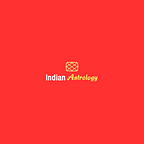Palmistry: The Ancient Art of Hand Reading
For centuries, palmistry, the study of the palm and the lines on the hand, has captivated cultures across the globe. This ancient practice, rooted in mysticism and folklore, claims to unveil insights into an individual’s personality, future, and destiny through the intricate map etched onto the human palm. While some view palmistry as a pseudoscience, others embrace it as a profound tool for self-exploration and divination.
The Origins of Palmistry
The origins of palmistry can be traced back to ancient civilizations, where it was intertwined with religious beliefs and mythological traditions. In India, palmistry, known as Samudrika Shastra, is believed to have emerged from the Hindu scriptures, with references dating back to the Chinese Book of Job and the biblical narratives.
The practice of palmistry also flourished in ancient Greece, where the philosopher Anaxagoras is credited with introducing the art to the region. The Greek word “palmistry” itself is derived from the Latin “palma,” meaning “hand.”
Throughout history, palmistry has been embraced by various cultures, from the Roma (Gypsies) in Europe to the Native Americans and the ancient Chinese civilizations. Each culture developed its unique interpretations and symbolism, leading to a rich tapestry of palmistry traditions.
The Art of Palmistry
At its core, palmistry involves the study of the shape, size, and lines on the palms and fingers. Practitioners believe that these markings are unique to each individual and can reveal profound insights into their character, talents, and life path.
The major lines on the palm that are analyzed in palmistry include:
- The Heart Line: This line is believed to represent emotional tendencies, relationships, and matters of the heart.
- The Head Line: Associated with intellectual abilities, decision-making, and mental prowess.
- The Life Line: Believed to indicate vitality, physical health, and overall well-being.
- The Fate Line: Linked to an individual’s life journey, career, and significant life events.
Beyond these primary lines, palmists also examine the shape and texture of the hands, the mounts or bumps on the palm, and the fingerprints, each believed to hold specific meanings. Join Online Palmistry Course now.
The Practice of Palmistry
To read palms, practitioners typically begin by examining the dominant hand, as it is believed to reveal the individual’s inherent traits and potential. The non-dominant hand is thought to represent the influence of life experiences and choices.
During a palm reading session, the palmist may ask the client to relax and extend their hand, allowing for a comprehensive analysis of the lines, mounts, and overall hand shape. The palmist then interprets the various markings, offering insights into the client’s personality, strengths, weaknesses, and potential life events.
Palmistry and Self-Discovery
While some view palmistry as a purely divinatory practice, others embrace it as a tool for self-discovery and personal growth. By understanding the interpretations of the lines and markings on their palms, individuals can gain a deeper understanding of their own tendencies, talents, and potential challenges.
For instance, a person with a prominent Heart Line may be encouraged to explore their emotional depths and cultivate meaningful relationships, while someone with a strong Head Line could be advised to pursue intellectual pursuits or careers that require analytical thinking.
Skepticism and Criticism
Despite its long history and cultural significance, palmistry has faced its fair share of skepticism and criticism. Many in the scientific community dismiss palmistry as a pseudoscience, citing a lack of empirical evidence and controlled studies to support its claims.
Critics argue that the interpretations of palm lines and markings are subjective and can be easily influenced by the practitioner’s personal biases or the client’s expectations. They also point out that any perceived correlations between palm readings and life events could be attributed to coincidence or self-fulfilling prophecies.
However, proponents of palmistry argue that the art is not meant to be a precise science but rather a tool for self-exploration and personal growth. They contend that the value of palmistry lies in its ability to provide insight, guidance, and a deeper understanding of oneself, rather than making definitive predictions.
The Future of Palmistry
In the modern age, palmistry continues to intrigue and fascinate individuals from diverse backgrounds. While some embrace it as a spiritual practice, others approach it with curiosity and an open mind, seeking insights into their personalities and life paths.
With the rise of technology, palmistry has also adapted, with various smartphone applications and online resources offering virtual palm readings and interpretations. However, many practitioners and enthusiasts still prefer the traditional, in-person approach, believing that the energy exchange and personal connection enhance the experience.
As with any practice rooted in ancient traditions, palmistry’s future will depend on its ability to evolve and remain relevant while preserving its core principles and mystique. Whether one approaches palmistry with skepticism or open curiosity, its enduring legacy and cultural significance cannot be denied, serving as a testament to humanity’s enduring fascination with the mysteries of the hand.
